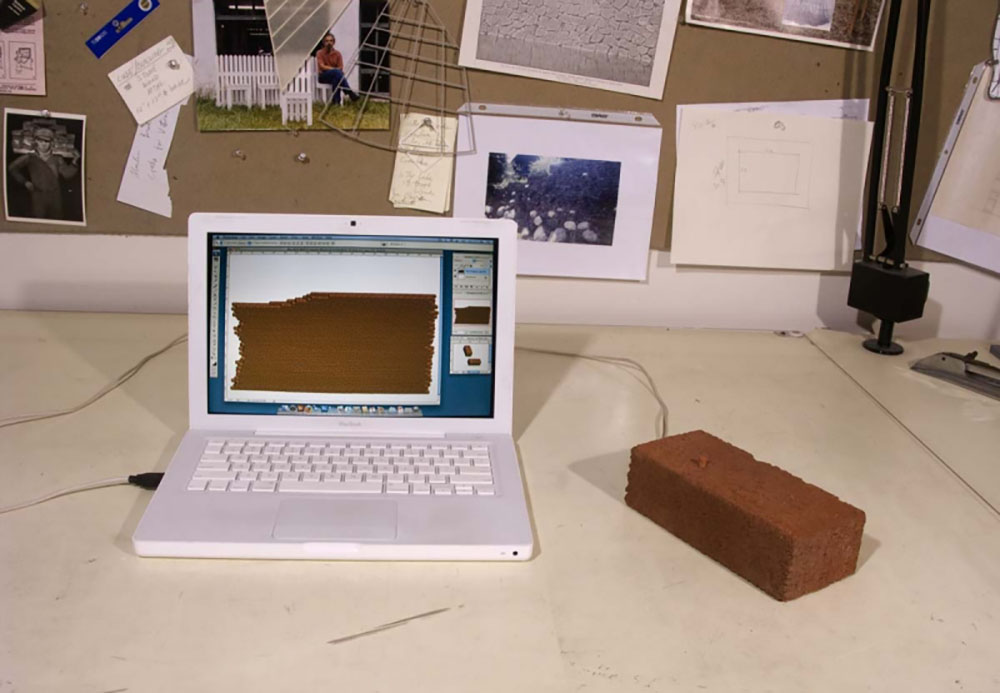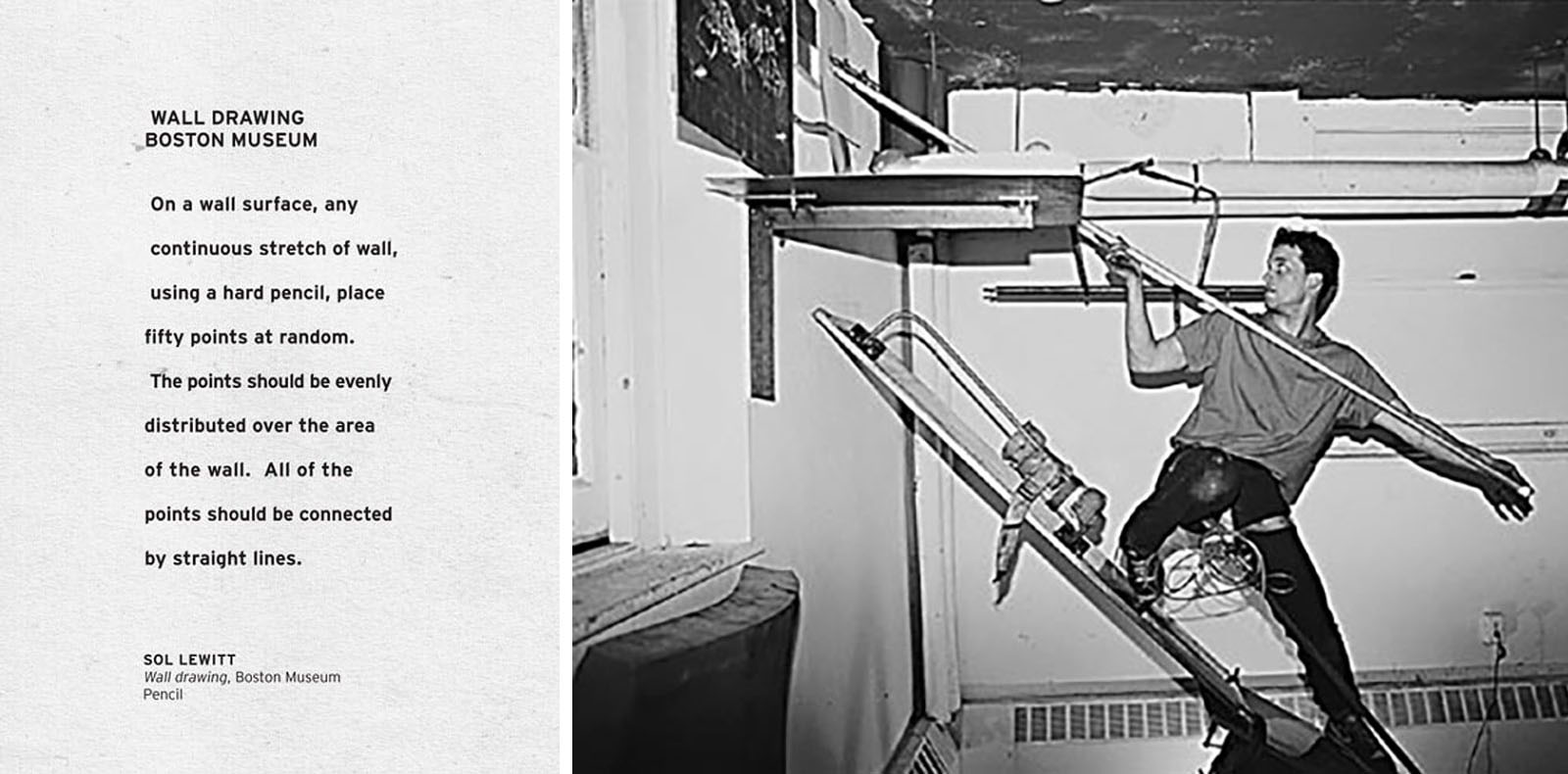This course explores computation through the history and culture of drawing in the discipline of architecture. On one hand the goal is for students to learn on a technical level, while on the other the course is framed to remove the aesthetic tropes of design computation as an alibi for complexity and/or precision.
We will be conducting the class in the Center for Collaborative Arts and Media (CCAM) Leeds studio which houses their Motion Capture research space. We will be using the Motion Capture software and hardware available at CCAM The course will explore the building of a framework for translating MoCap data in real-time into Rhino via Grasshopper or a combination of Processing and Data. In the past students have explored reading and measuring through various input devices (cameras, microphones, etc.) or sensors in a way to explore how the digital and physical worlds can interact and comingle in unexpected ways. This semester we will use the MoCap system in CCAM as the main sensor. Resources and examples shown in class will be posted on the course website: http://2226b.softlabnyc.com/
The course will start with a series of intro classes of the MoCap software and the workflow for receiving the captured data into Rhino through Grasshopper. The first assignment/project will be a series of simple objects built by students to track and create “motion” drawings. The second half of the semester will be student driven research projects using the workflow(s) developed in the first half of the semester. Students will present proposals for these projects and then execute them through a series of workshops in the second half of the semester.
 How to Build a Digital Brick Wall – Allan Wexler, 2009
How to Build a Digital Brick Wall – Allan Wexler, 2009
Computation is simply the act of executing a mathematical equation. Regarding computation, computers are great at two things 1. Executing complex calculations almost instantaneously and 2. Executing those calculations many times over without error. These are also two things people are inherently bad at. While computers are great at being discrete, we (and the physical world) are great at introducing idiosyncratic and unpredictable conditions into discrete processes. Rather than try to overcome these shortcomings and differences, this course leverages them to provide a critical introduction to computation.
 Wall Drawing Instructions – Sol Lewitt 1971 Drawing Restraint 2 – Matthew Barney 1988
Wall Drawing Instructions – Sol Lewitt 1971 Drawing Restraint 2 – Matthew Barney 1988
Drawing can be considered the analog to computation in the discipline of architecture. In Alberti’s treatise, De pictura he outlines the first mathematical solution to the problem of drawing a tiled floor in perspective. A century later engineers and architects began pioneering the techniques of descriptive geometry which outlined the various methods of constructing precise planar projections of three-dimensional objects and spaces.
These methods continue to be used today, although more often than not, the planar medium of vellum or paper has been replaced with a digital screen. In this case the software we use employs these methods of construction in real-time. While the changes on screen give the impression of changes we are making in a three-dimensional environment, they are in fact constructed drawings.
Whether we construct a drawing by hand, or through software, what we represent or see is the interpolation of points and their connections (as edges) in three-dimensional space. Through an understanding and discrete control of this interpolation we can introduce new mechanisms to control or input the construction of drawings. Opportunities emerge to replace a pencil or mouse with a brick, sound, wind, insects, the human body, etc. Rather than think of a drawing as a deterministic representation where fidelity or a visual analog. is the goal, drawing can be thought of as an open-ended process (similar to Sol LeWitt’s Wall Drawings) where the outcomes are endless.
Debugged – Edhv, 2010
Measure is an integral part of drawing, typically representing linear distance. A range of instruments are used depending on the complexity of the object or space. The precision of measure is determined by the various subdivisions of units. Using transdisciplinary instruments of measure to construct a drawing might have a direct corollary to these units, for instance the RGB value of an image can be directly translated into the X,Y,Z coordinate system. But other measures, such as speed, temperature, or touch would require more creative translations to implement them in the various methods of descriptive geometry or constructing a drawing. Or a depth camera might be used an instrument of measure to record the geometry of a sheet blowing the wind as a surface to construct a non-planar section through a virtual sphere.
Methods & Techniques:
The class will focus on a quick introduction to Processing through a series of quick assignments for the first third of the semester. Through Processing students will be exposed to basic programming and how data can be passed between software and various inputs. The final project will be a research-based prototype or proof of concept that utilizes some form of tangible interaction to drive a digital process or vice versa. Students can work individually or in pairs to develop the assignments.
Assignments:
This course will be a research based technical seminar. Students will be exposed to the use of scripting and coding within various workflows to customize interactions and outcomes. Students can work in pairs or as individuals for each of these assignments. The deliverables will be broken up into two assignments:
1. Motion Drawing – a series of three-dimensional drawings created using MoCap data captured form objects the students have built.
a. Deliverables: 3/11 A slideshow of drawings in applicable media and formats.
2. Final Project – a student driven proof of concept that explores links between physical and digital spaces through using MoCap/Processing/Rhino/Grasshopper creative systems of measure, sensing, and “drawing.”
Deliverables:
a. Project working proposal 3/29: PDF of sketches, references, etc.
b. Final project 5/10: PDF and video of the final project as well as the development and tests.
Schedule:
Week 1 1/18 Introduction to course MoCap software
Week 2 1/25 Sending real time data from MoCap vis OSC
Project 1a assigned: Objects for Mocap
Week 3 2/1 Project 1a: Students present their tracking objects
Project 1b assigned: Motion drawings
Week 4 2/8 MoCap to Rhino via OSC/Grasshopper
Week 5 2/15 Introduction to parsing data via Processing>Grasshopper
Week 6 2/22 Processing and Grasshopper Workshop
Week 7 3/1 Project 1: Students present their objects and motion drawings
Project 2 assigned: Final project proposal
Week 8 3/8 Studio Midterm Week (Optional Class)
Week 9 3/15 **** No Class Spring Recess****
Week 10 3/22 **** No Class Spring Recess****
Week 11 3/29 Students present their project proposals
Week 12 4/5 Work Session
Week 13 4/12 Work Session
Week 14 4/19 Work Session
Week 15 4/26 Work Session
Week 16 5/3 **** No Class Studio Reviews****
Week 17 5/10 TBD Final Presentation